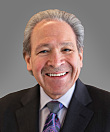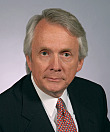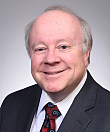05.17.2007
|
Updates
The U.S. Supreme Court recently agreed to determine whether a legal theory known as “scheme liability” can be used to sue for securities fraud entities that, until now, have largely been protected from liability. Under scheme liability, advisors (such as accountants, lawyers and consultants) and even third parties (including banks, vendors and customers) involved in transactions with a corporation may be liable for securities fraud if that corporation is alleged to have used the transaction to mislead investors—even if the advisors or third parties did not make any public statement about the transaction. The Court's decision in this case, Stoneridge Investment Partners, L.L.C. v. Scientific-Atlanta, Inc., 127 S. Ct. 1873 (2007) presents a potentially significant expansion of those potentially liable in a securities fraud case to include third parties whom the Supreme Court has for 13 years excluded from potential liability.
This Update summarizes the key issues raised by the Court's decision and offers practical advice.
Stoneridge Could Create Loophole in Central Bank of Denver Decision
If the Court accepts scheme liability as a basis to hold secondary actors liable under the securities laws, it would largely remove the protections afforded such parties by the Court’s 1994 decision in Central Bank of Denver, N.A. v. First Interstate Bank of Denver, N.A., 511 U.S 164 (1994). In Central Bank of Denver, the Court found that a plaintiff may not bring a securities action for “aiding and abetting” a violation of Section 10(b) or Rule 10b-5 under the Securities Exchange Act of 1934. Central Bank of Denver created a zone of safety for professional advisors and others who assisted the entity whose public statements became the subject of a Section 10(b) claim. Ever since the Central Bank of Denver decision, plaintiffs have searched for a theory other than aiding and abetting to impose liability on lawyers, accountants, bankers and others who may have assisted or cooperated with the securities issuer whose disclosures were alleged to be fraudulent.
Stoneridge Decision Will Address Conflict Among the Circuit Courts of Appeals. The federal courts of appeals have reached conflicting decisions as to whether scheme liability is a valid legal theory or simply an impermissible end-run around Central Bank of Denver. The Fifth and Eighth Circuits have rejected scheme liability, while the Ninth Circuit has accepted it. Through Stoneridge, the Supreme Court will address this conflict and establish a nationwide standard.
In re Charter Communications. The Eighth Circuit was the first federal appellate court to reject a scheme liability claim. The plaintiffs in In re Charter Communications, Inc., Securities Litigation, 443 F.3d 987 (8th Cir. 2006), alleged that Charter Communications “enter[ed] into sham transactions with two equipment vendors that improperly inflated Charter’s reported operating revenues and cash flow.” The Eighth Circuit rejected the plaintiffs’ efforts to characterize the activities of the equipment vendors as that of primary rather than secondary violators, cautioning that “[t]o impose liability for securities fraud on one party to an arm’s length business transaction in goods or services other than securities because that party knew or should have known that the other party would use the transaction to mislead investors in its stock would introduce potentially far‑reaching duties and uncertainties” that Congress alone should impose.
Regents of UC v. Credit Suisse. In the Fifth Circuit case, Regents of University of California v. Credit Suisse First Boston (USA), Inc., 482 F.3d 372 (5th Cir. 2007), the plaintiffs similarly alleged that various banks “entered into partnerships and transactions that allowed Enron Corporation . . . to take liabilities off of its books temporarily and to book revenue from the transactions when it was actually incurring debt.” In rejecting scheme liability, the Fifth Circuit held that because the banks owed no duty to Enron’s shareholders, they had no duty to disclose, and, therefore, their participation in those transactions, at most, aided and abetted Enron, which is an insufficient basis for liability under Central Bank of Denver.
Simpson v. AOL Time Warner. These cases contrast with a Ninth Circuit decision, Simpson v. AOL Time Warner Inc., 452 F.3d 1040 (9th Cir. 2006), where plaintiffs sued Homestore.com alleging that Homestore “entered into fraudulent transactions with [corporations] in which Homestore purchased revenue for itself and then recorded that revenue in violation of SEC accounting rules.” While the court concluded that the complaint in question was properly dismissed, it also indicated that under the right set of facts, scheme liability can be a valid basis to hold liable a party who does not make a false or misleading statement. The court held "that to be liable as a primary violator of § 10(b) for participation in a ‘scheme to defraud,’ the defendant must have engaged in conduct that had the principal purpose and effect of creating a false appearance of fact in furtherance of the scheme. It is not enough that a transaction in which a defendant was involved had a deceptive purpose and effect; the defendant’s own conduct contributing to the transaction or overall scheme must have had a deceptive purpose and effect.”
Court Could Jointly Consider Stoneridge and Regents of UC v. Credit Suisse. To resolve this conflict, the Supreme Court on March 26, 2007, granted certiorari from the Eighth Circuit’s decision in Charter Communications and, under the Stoneridge caption, will determine the validity of scheme liability as a basis for imposing liability on third parties. The case will be argued during the Court’s 2008 term, which begins in October 2007. On March 5, the plaintiffs in the Credit Suisse First Boston case from the Fifth Circuit filed a petition with the Supreme Court asking the Court to consider their appeal of that case concurrently with Stoneridge. That petition is pending.
Conclusion
The Supreme Court’s decision in Stoneridge will either reinforce its Central Bank of Denver decision or demonstrate that securities plaintiffs have at last found a loophole to avoid the limits imposed by Central Bank of Denver. If the Court affirms the Eighth Circuit’s decision, secondary actors in an alleged fraudulent scheme who operate in the western United States, where the Ninth Circuit is located, could face a reduced risk of being successfully sued under the federal securities laws. By contrast, if the Court reverses the Eighth Circuit’s decision and adopts the position espoused by the Ninth Circuit in AOL Time Warner, secondary actors in an alleged fraudulent scheme who are sued in other parts of the country could find their risk of liability significantly expanded.
|
Practical Tip Companies Should Seek Advice on Managing Risk. Until the Supreme Court issues its decision and provides additional guidance on activities that are protected, and activities that pose risk, companies should consult with counsel about how best to manage their risk if they suspect that a participant to a transaction in which the company is involved may be using that transaction to defraud its shareholders. |






